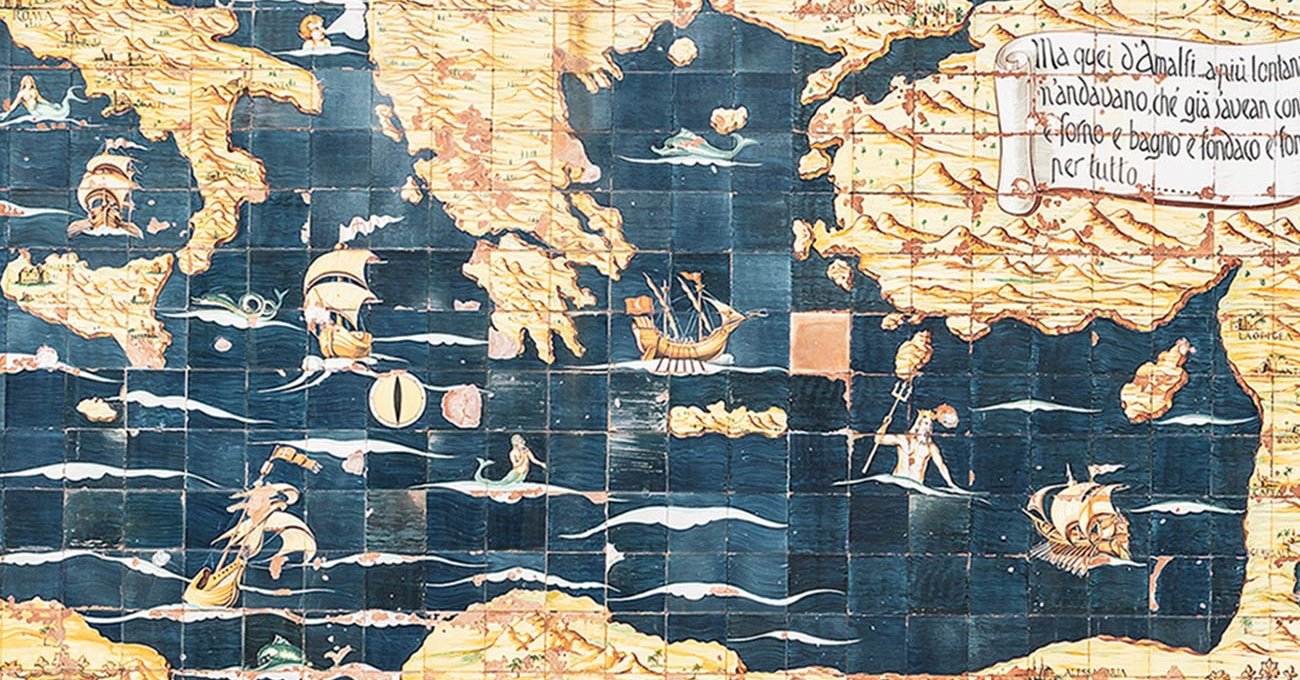Das Küstengebiet rund um Amalfi fasziniert auf vielerlei Ebenen: Die Region ist so schön, dass selbst Götter sich hier wohlfühlten. Die Stadt war im Mittelalter so bedeutend, dass sie zur ersten Seerepublik Italiens wurde. Und in Amalfi soll sogar der Kompass erfunden worden sein. Begleiten Sie uns auf eine Zeitreise!
Der junge Herkules ist untröstlich. Viel zu jung ist seine geliebte Nymphe gestorben. Trotz all seiner Kraft konnte der Sohn von Zeus und Alkmene sie nicht retten. Wie sollte er nur weiterleben? Um seine Trauer hinter sich zu lassen, brachte er ihren Leichnam an den schönsten Ort der Erde – und gründete dort eine Stadt mit ihrem Namen: Amalfi.
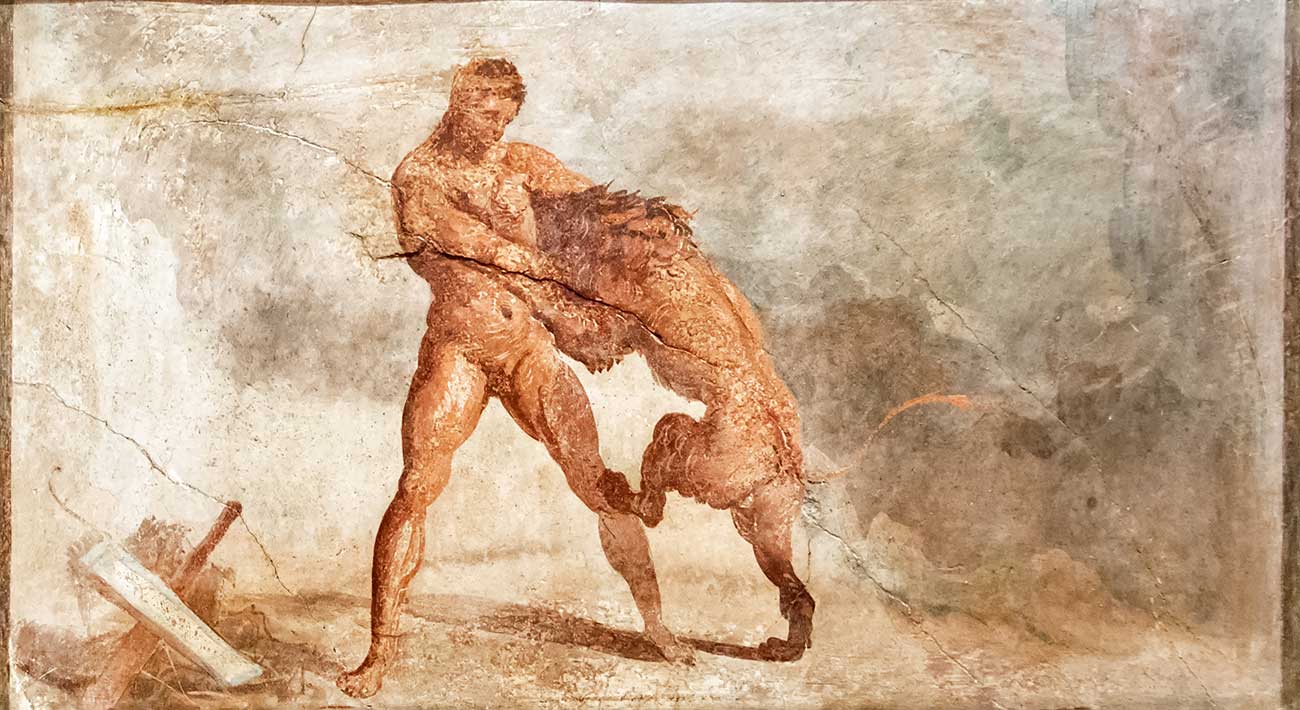
Ein Mythos, so malerisch wie die Amalfiküste. Er hat seine Berechtigung, denn niemand weiß genau, wann und wie Amalfi gegründet wurde. In weniger blumigen Quellen werden Soldaten des Kaisers Konstantin als Gründer Amalfis benannt. Sie sollen 320 n. Chr. aus dem adriatischen Küstenort Melphe gekommen sein, woraus sich der Name ableite (a melphe).
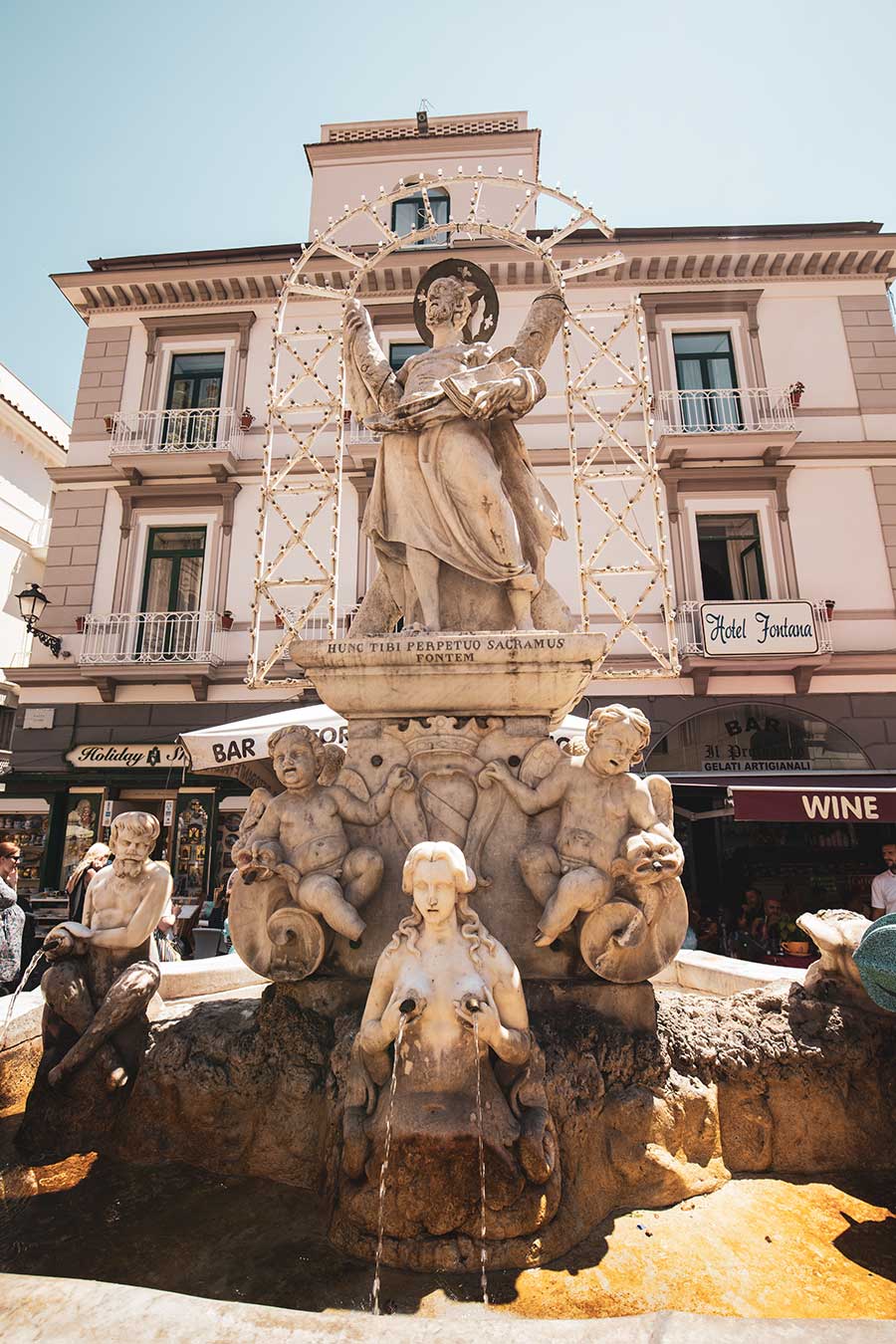
Die Blüte der Seerepublik Amalfi
Wie dem auch sei, die Bedeutung Amalfis wuchs im Mittelalter exponentiell. Die selbstbewussten Politiker der weitgehend autonom agierenden Stadt verhandelten geschickt mit den umliegenden Mächten – mit Byzantinern und Langobarden, ja selbst mit Kaiser und Papst. Im 9. Jahrhundert entsandte Amalfi Schiffe zur Verteidigung Roms vor den Sarazenen. Gemeinsam mit den Flotten von Neapel und Gaeta gelang es, die arabischen Eindringlinge zu schlagen. Und so wurde Amalfi die erste der vier mittelalterlichen Seerepubliken Italiens. Sie wurde zum Vorbild für Genua, Pisa und Venedig. Noch heute sind die vier Wappen in der italienischen Handelsflagge zu sehen.
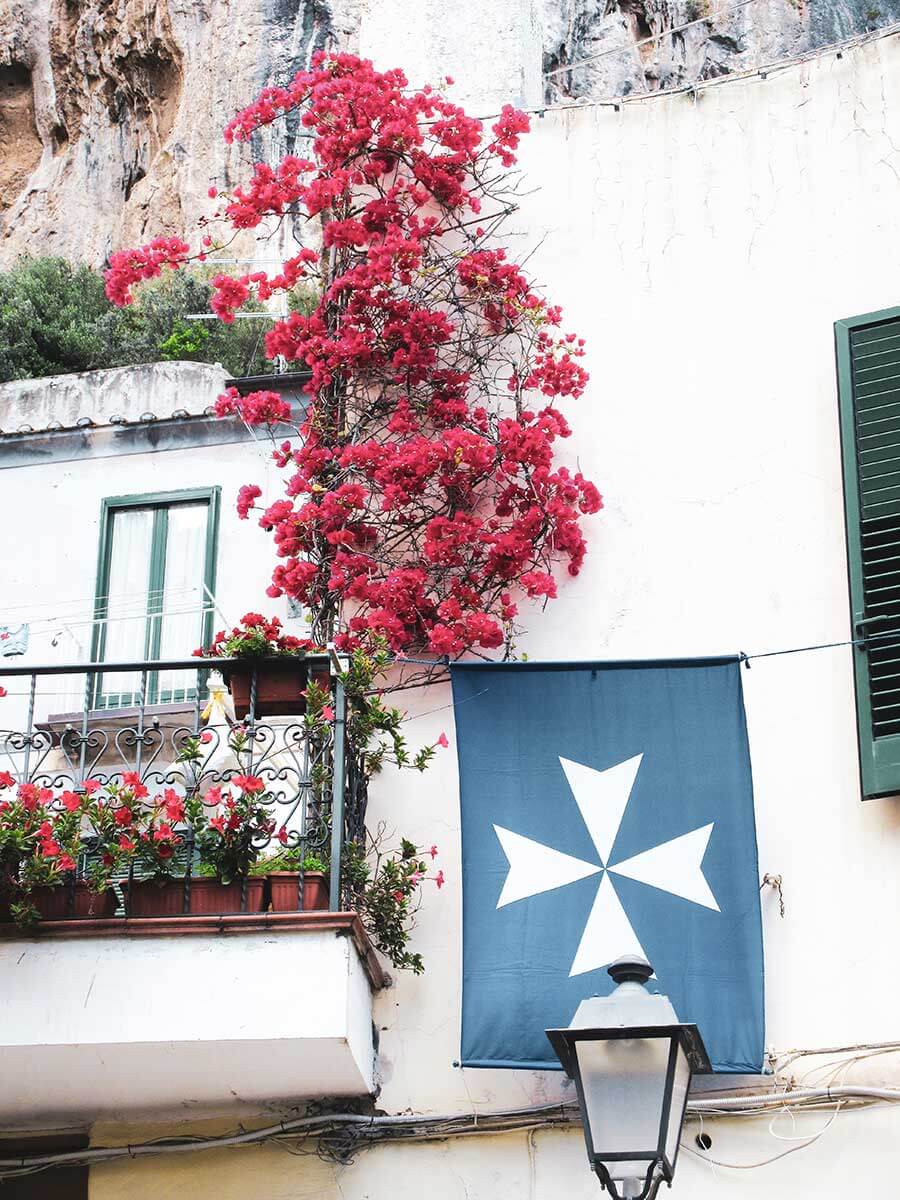
Zu besonderen Anlässen wird die blau-weiße Flagge an den Häusern gehisst.
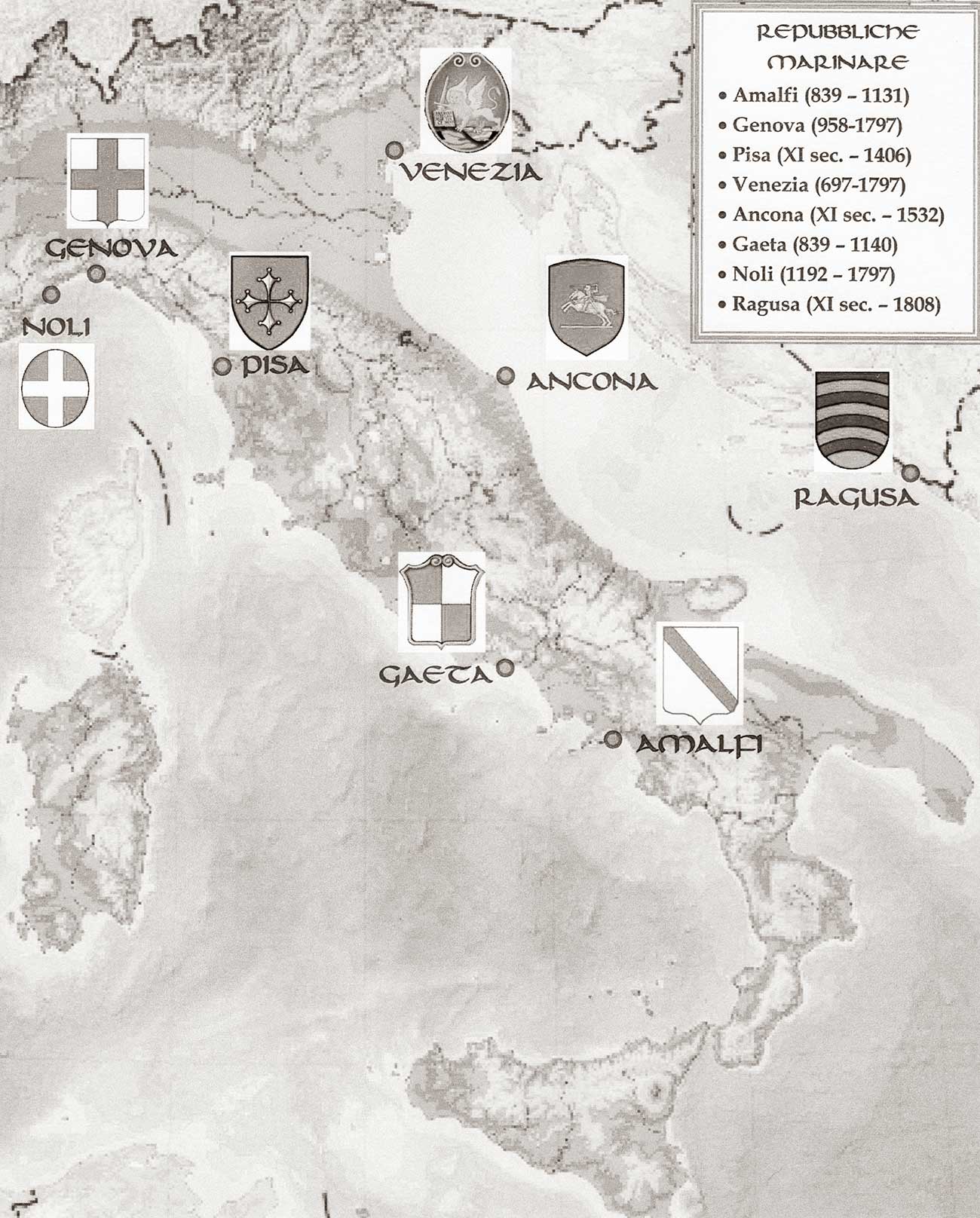
Amalfi zählte eins zu einer der wichtigsten maritimen Gebiete dank der Kollaboration mit Byzanz.
Die guten Beziehungen der Amalfitaner zu Byzanz beförderten das Wachstum der Region. Byzanz sah in Amalfi als Tor zum westlichen Mittelmeer, die Kaufleute der Stadt hatten freien Zugang zu allen Häfen im byzantinischen Reich. Sie nutzten ihre Macht und gründeten Stützpunkte in wichtigen Städten wie Konstantinopel, Córdoba, Beirut, Jerusalem, Alexandria, Kairo, Zypern und Malta. Im 10. Jahrhundert war Amalfi zur Drehscheibe im Handel zwischen Orient und Okzident geworden. Mehr noch: Die Seerepublik entwickelte sogar das erste schriftliche Seerecht Italiens – die Tabula Amalphitana.
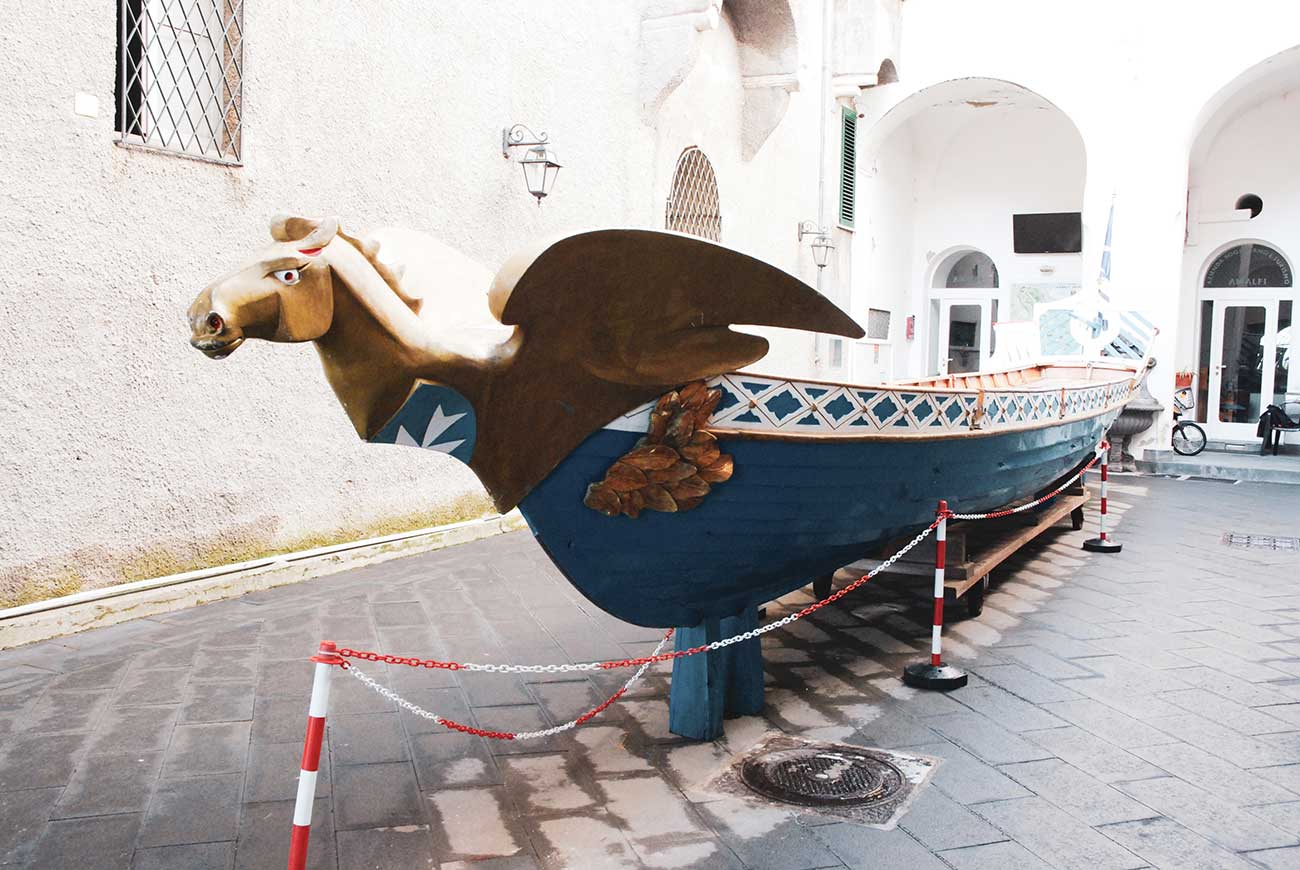
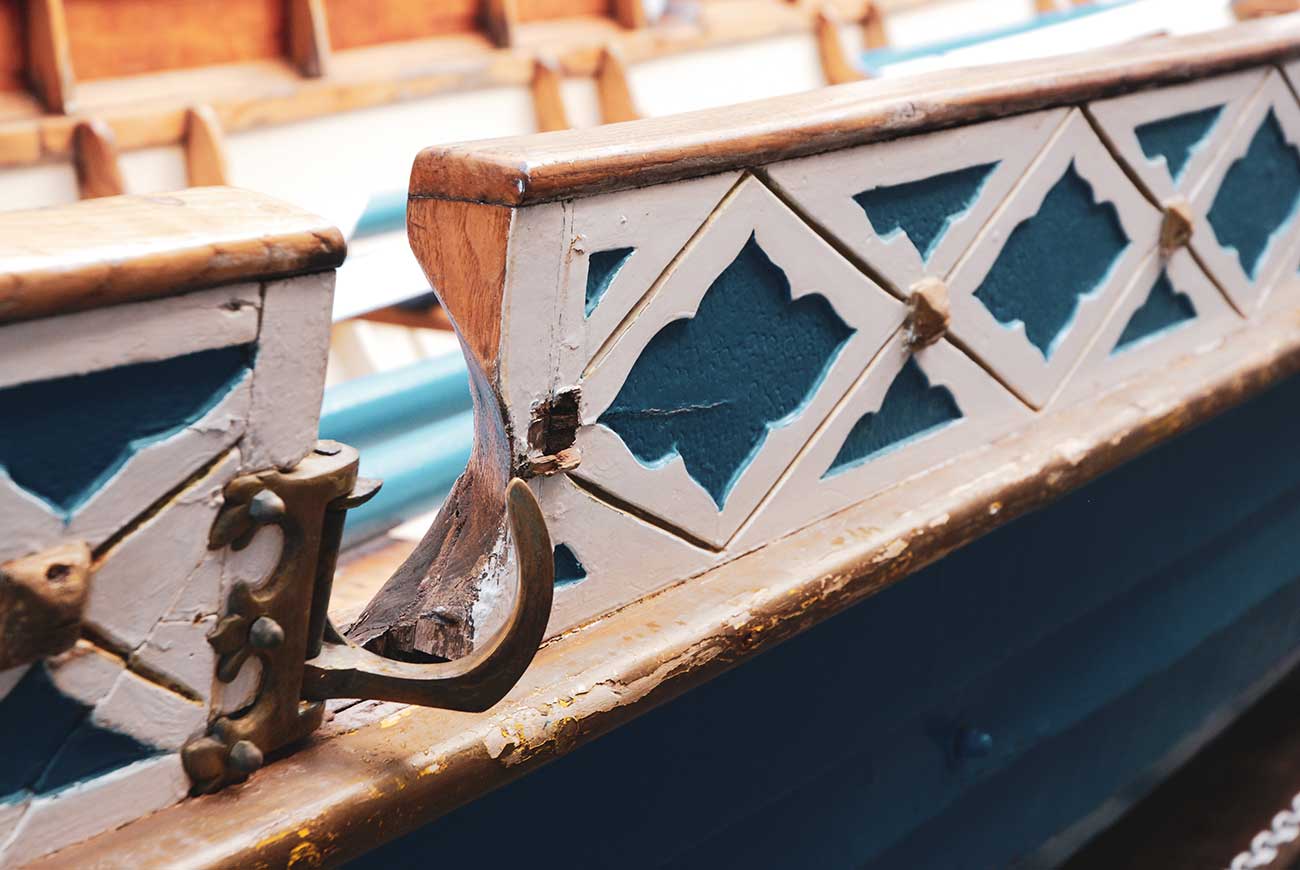
Von der Metropole zum Piratenversteck
Doch wo viel Licht ist, gibt es auch Schatten: Innere Unruhen schwächten Amalfi im elften Jahrhundert. 1073 eroberten Normannen die Stadt und der Rivale Pisa schlug im 12. Jahrhundert zu: Nach zwei verheerenden Angriffen 1135 und 1137 war die Glanzzeit Amalfis beendet. Aber die Kaufleute der Stadt blieben engagiert und entwickelten gutgehende Handelsbeziehungen mit dem muslimischen Sizilien und nach Nordafrika. Dann schlug die auch noch die Natur zu.
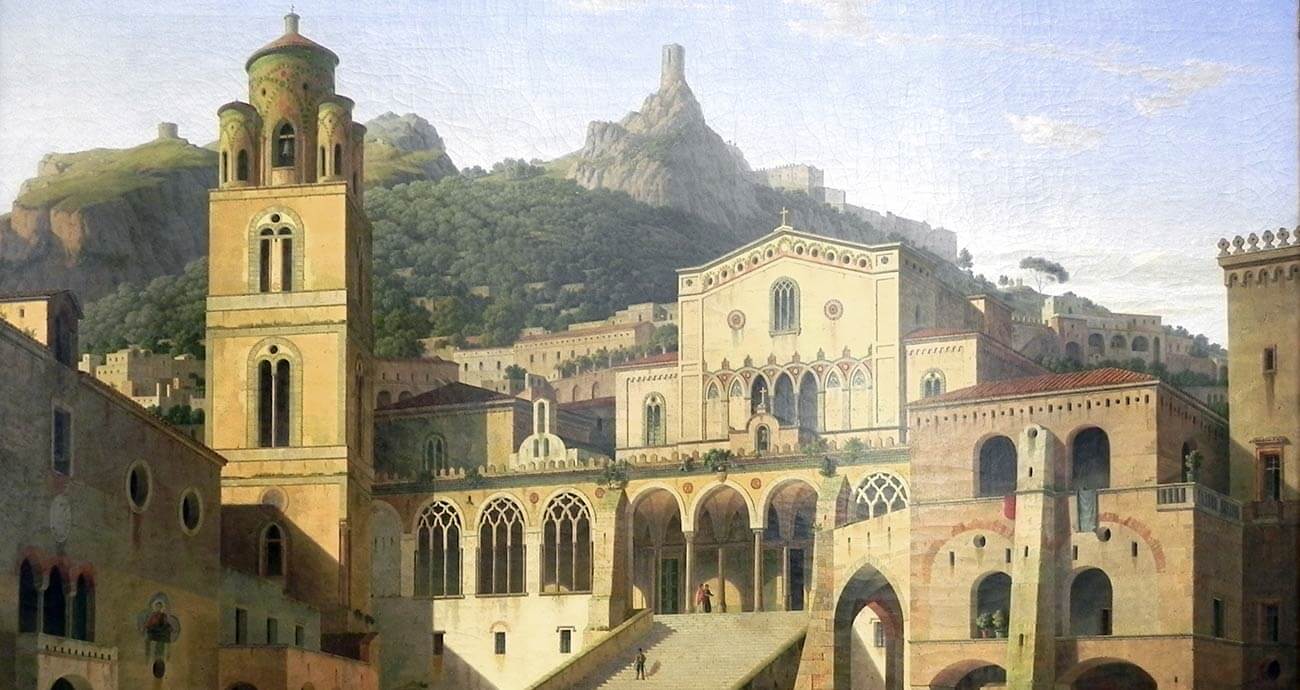
Ein durch ein Erdbeben ausgelöster Tsunami ließ im November 1343 Teile der Stadt im Meer versinken, es folgten die Abhängigkeit von Pisa und Neapel. Bis zur Mitte des 19. Jahrhunderts war Amalfi ausschließlich auf dem Seeweg zu erreichen und wurde zum idealen Piratenversteck. Die Herstellung von Papier und Pasta waren damals die wichtigsten Erwerbszweige. In den Jahren 1875/76 bannte dann der dänische Landschaftsmaler Carl Frederic Aagaard Amalfi mit Ölfarben auf Leinwände. Vielleicht war er einer der Mitbegründer des Tourismus-Booms im 20. Jahrhundert, der neues Leben in die Region brachte.
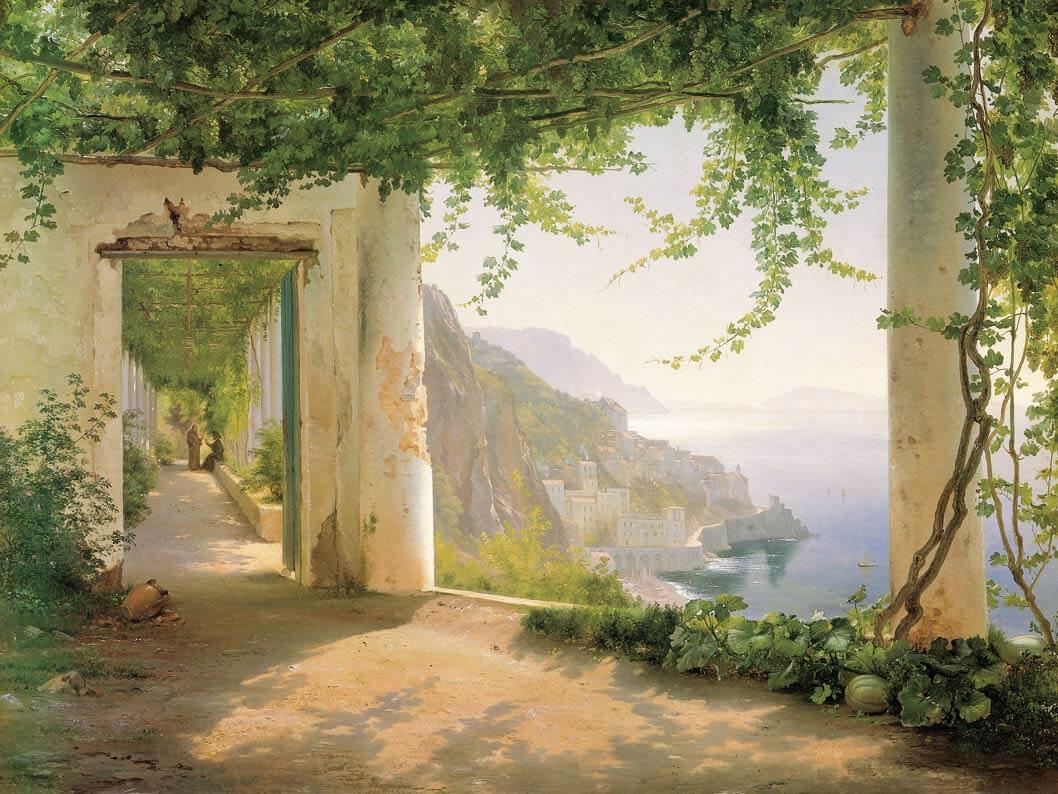
Zwischen Historie und Seemannsgarn
Ein Mann in mittelalterlicher Kleidung blickt auf ein Gerät in seiner Hand. Er steht auf einer Welle aus Stein hoch über dem Fußweg im Hafen von Amalfi. Die Statue von Alfonso Balzico zeigt Flavio Gioia, den vermeintlichen Erfinder des Kompasses. Historisch verbürgt ist die Herkunft des Seefahrers nicht, auch die Nachbargemeinde Positano erhebt Anspruch auf ihn.
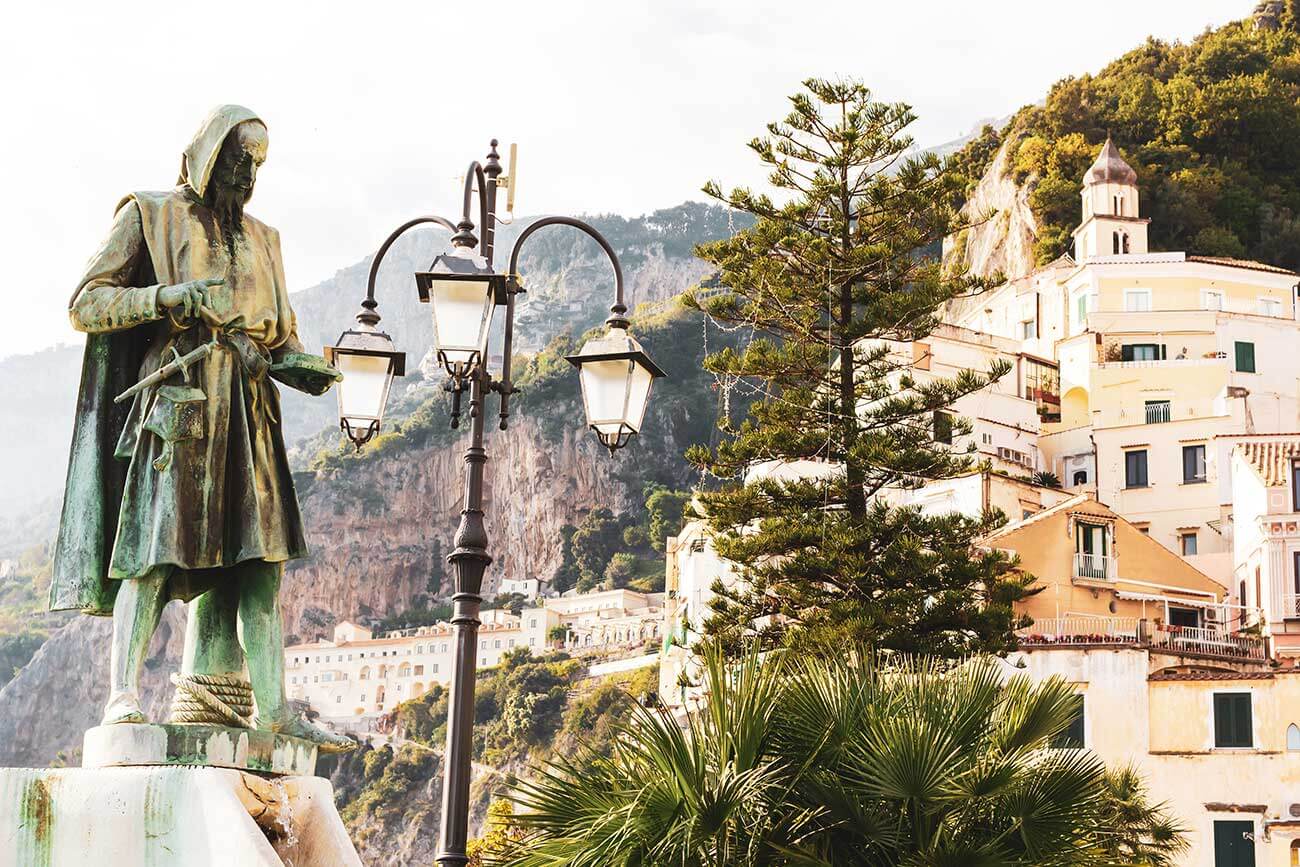
Ob dies stimmt, ist allerdings zweifelhaft.
Der Kompass war bereits lange vor Gioia im Einsatz. Die Chinesen benutzten seit dem 11. Jahrhundert nach Christus eine schwimmende Kompassnadel. Im chinesischen Kompass war Süden die Hauptrichtung. Spätestens zur Zeit der Kreuzzüge erfuhren Matrosen des östlichen Mittelmeeres vom Kompass und optimierten ihn.
Von einem trockenen Kompass ist zum ersten Mal 1269 die Rede. Einige Quellen schreiben Flavio Gioia diese Weiterentwicklung zu. Ob diese Theorie stimmt, kann nicht zweifelsfrei belegt werden. Fest steht jedoch: Die Amalfitaner sind mit dem Meer fest verbunden.
Odysseus und die Sirenen
Apropos Seefahrerlegenden: Unweit der Amalfiküste soll auch Odysseus vom Klang der Sirenen beinahe in den Wahnsinn getrieben worden sein. Die Griechen sahen die Inselgruppe Li Galli in der Nähe von Positano als die Heimat der Nymphen an, die Seefahrer mit ihrem Gesang verzauberten. Wer dem Ton der mythischen Wesen – halb Vogel, halb Mensch – folgte, war der Legende nach dem Tode geweiht.
Der kluge Seefahrer Odysseus ergriff daher Vorsichtsmaßnahmen: Er verklebte seiner Mannschaft die Ohren mit Wachs, bevor sie sich dem gefährlichen Revier näherten. Er selbst ließ sich an den Mastbaum binden, war er doch zu neugierig auf das Lied der Sirenen. Zum Glück gehorchte die Mannschaft seinem Befehl, ihn erst loszubinden, als die Gefahr vorüber war und Odysseus konnte entkommen.
Die Sirenen sind noch immer allgegenwärtig in der Region – ob als Motiv auf Keramik oder als Namensgeberinnen für Restaurants, Busgesellschaften oder Friseursalons. Wir haben auf unserer Segelreise des Öfteren in die Nacht gelauscht, doch da war zum Glück nichts zu hören außer dem Wind in unseren Segeln …
Fotoquellen: Titelbild DinoPh/Shutterstock | Beitragsbild 1 Viacheslav Lopatin/Shutterstock | Beitragsbild 2 wjarek/Shutterstock | Beitragsbild 3 FMilano_Photography/Shutterstock | Beitragsbild 5+6 Gennaro DiBs/Shutterstock | Beitragsbild 9 Rrrainbow/Shutterstock

